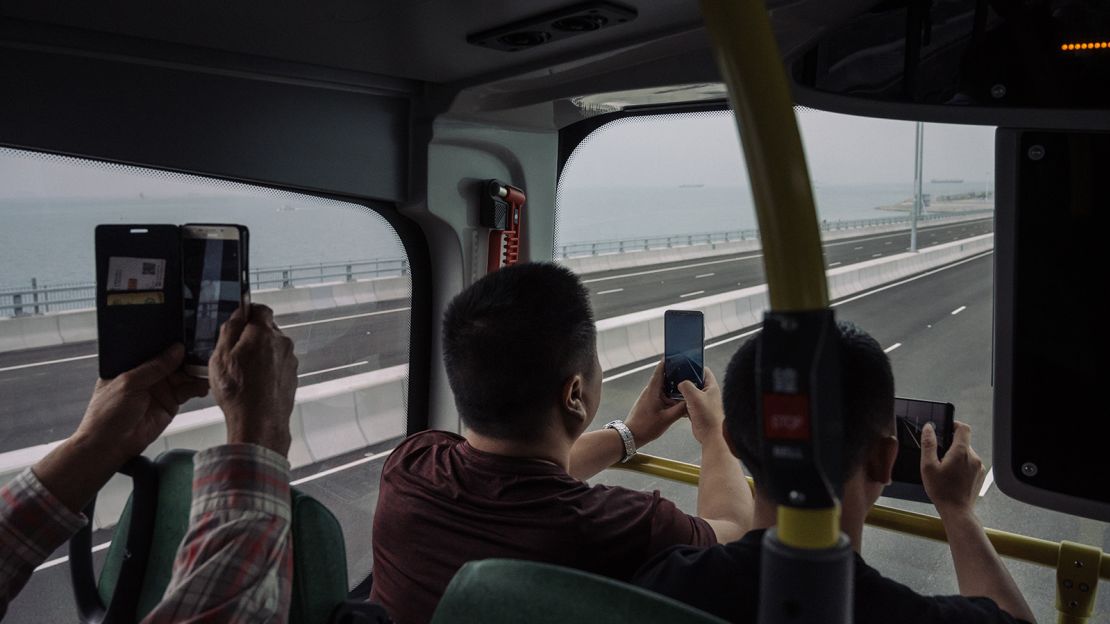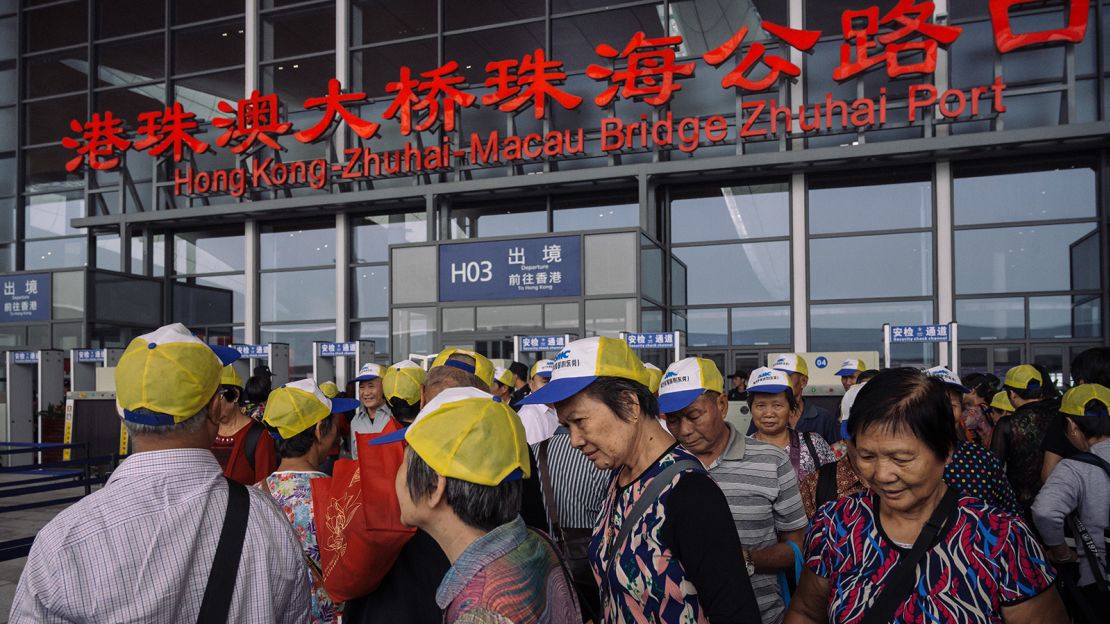After nine years of construction and a staggering $20 billion price tag, the Hong Kong-Zhuhai-Macau Bridge, AKA the world’s longest sea-crossing bridge, is finally open.
The 55-kilometer bridge comprises a Hong Kong Link Road (12 kilometers), a Main Bridge (29.6 kilometers) and a Zhuhai Link Road (13.4 kilometers).
It connects the three major cities in China’s Pearl River Delta area, namely Hong Kong, Zhuhai and Macau.
Just a 45-minute drive away
But the bridge wasn’t built just to set a record. It’s also about convenience and access. While Zhuhai and Macau share a border, Hong Kong was previously an hour-long ferry ride away from the two cities.
(You can also opt to journey by helicopter, if you’re feeling posh, or there’s a five-hour bus that goes from Hong Kong to the other two cities on land.)
Thanks to the bridge, cars can cross the sea to the other ports in 45 minutes, not including immigration processing time.
The nuts and bolts

A new Hong Kong Zhuhai Macao Bridge shuttle bus – dubbed the “Golden Bus” because of the fleet’s golden livery – connects the three cities via the bridge.
However, it’s not as simple as just buying tickets and hopping on board.
Seats can be booked at ticket counters and vending machines within the departure halls in the three respective border control facilities, called Passenger Clearance Buildings.
Although Hong Kong and Macau are part of China, the two cities are governed under a separate legal framework. This means you’ll have to clear immigration at both ends of the journey and carry a valid travel document with you.
The bus runs 24 hours a day and costs from US$8 to US$10 per trip – cheaper than a standard ferry ticket.
All three bus terminals in each city are located at the Passenger Clearance Buildings, all of which are a short ride from the city center.
Bus schedules can be found on this website, though departure times could vary during the initial opening period.
More direct ways across the bridge
There are also privately run coaches and hire cars running between the three cities via the bridge.
One Bus Hong Kong Macau Ltd runs 19 daily return trips between Kwun Tong, the eastern side of Hong Kong’s Kowloon and a few hotels in Macau.
A trip takes a little less than two hours.

Tickets can be purchased at these locations, though an online reservation system is due to open in the near future.
Meanwhile, Trans Island Limited runs about 400 coaches between the three cities via the bridge, daily.
The company claims that a journey between Tsim Sha Tsui, the shopping district of Hong Kong at the southernmost tip of Kowloon, and Zhuhai’s border will take about 75 minutes.
Passengers can find all the stops and fares on its website.
And if you’d rather buy in person, ticketing centers are located across Hong Kong. Fares are from $15 to $25 per trip.
Leave your cars at home
Planning a self-driving road trip? It may not be as easy as it sounds, even if you have a car.
There’s a private car quota for the bridge, which means drivers require a special Closed Road Permit and vehicle insurance that’s valid in the three cities.
As the bridge is located within Mainland Chinese waters, all cross-boundary vehicles are required to drive on the right – in Hong Kong, people drive on the left (a holdover from the British colonial days). This may be disorienting for drivers – and perhaps one reason only 2,305 vehicles used the bridge on opening day.
That’s peanuts compared to the 19,146 vehicles crossing Oresund Bridge – the bridge connecting Sweden’s Malmo and Denmark’s Copenhagen – daily, but it could change as drivers become more comfortable with the system.
More information is available on Hong Kong’s HZMB website (in both English and Chinese).
What to do in Zhuhai?
Unlike Macau, which is world-famous for its glittering casinos and historic Portuguese neighborhoods, Zhuhai is relatively unknown on the global tourist trail.
But thanks to its proximity to Macau and its relatively lower cost of living, Zhuhai has long been a popular destination for Hong Kong and Macau residents.
Tourist highlights include the New Yuan Ming Palace – a replica of the Old Summer Palace in Beijing – and the Zhuhai Wanzai Seafood Market, which is filled with fresh seafood and restaurants that will cook them up for you on the spot.




















